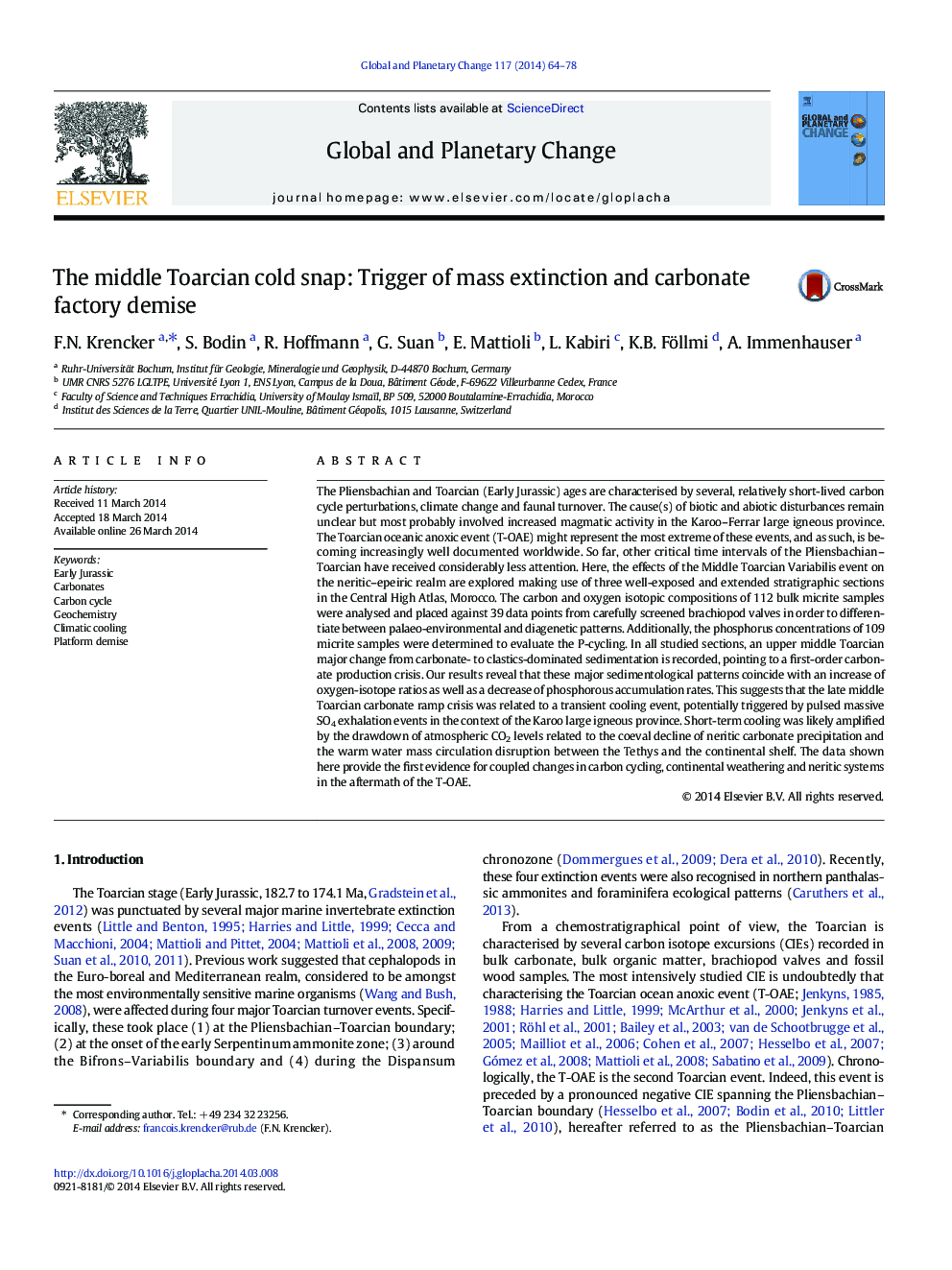| کد مقاله | کد نشریه | سال انتشار | مقاله انگلیسی | نسخه تمام متن |
|---|---|---|---|---|
| 4463443 | 1621664 | 2014 | 15 صفحه PDF | دانلود رایگان |
• A carbonate crisis is highlighted during the middle Toarcian in W Tethys.
• Oxygen isotopes of brachiopod valves are used to reconstruct seawater temperature.
• The carbonate crisis is coeval to a mass extinction and a transient cooling event.
• Phosphorus analyses document enhanced nutrient levels during the Late Toarcian.
The Pliensbachian and Toarcian (Early Jurassic) ages are characterised by several, relatively short-lived carbon cycle perturbations, climate change and faunal turnover. The cause(s) of biotic and abiotic disturbances remain unclear but most probably involved increased magmatic activity in the Karoo–Ferrar large igneous province. The Toarcian oceanic anoxic event (T-OAE) might represent the most extreme of these events, and as such, is becoming increasingly well documented worldwide. So far, other critical time intervals of the Pliensbachian–Toarcian have received considerably less attention. Here, the effects of the Middle Toarcian Variabilis event on the neritic–epeiric realm are explored making use of three well-exposed and extended stratigraphic sections in the Central High Atlas, Morocco. The carbon and oxygen isotopic compositions of 112 bulk micrite samples were analysed and placed against 39 data points from carefully screened brachiopod valves in order to differentiate between palaeo-environmental and diagenetic patterns. Additionally, the phosphorus concentrations of 109 micrite samples were determined to evaluate the P-cycling. In all studied sections, an upper middle Toarcian major change from carbonate- to clastics-dominated sedimentation is recorded, pointing to a first-order carbonate production crisis. Our results reveal that these major sedimentological patterns coincide with an increase of oxygen-isotope ratios as well as a decrease of phosphorous accumulation rates. This suggests that the late middle Toarcian carbonate ramp crisis was related to a transient cooling event, potentially triggered by pulsed massive SO4 exhalation events in the context of the Karoo large igneous province. Short-term cooling was likely amplified by the drawdown of atmospheric CO2 levels related to the coeval decline of neritic carbonate precipitation and the warm water mass circulation disruption between the Tethys and the continental shelf. The data shown here provide the first evidence for coupled changes in carbon cycling, continental weathering and neritic systems in the aftermath of the T-OAE.
Journal: Global and Planetary Change - Volume 117, June 2014, Pages 64–78
